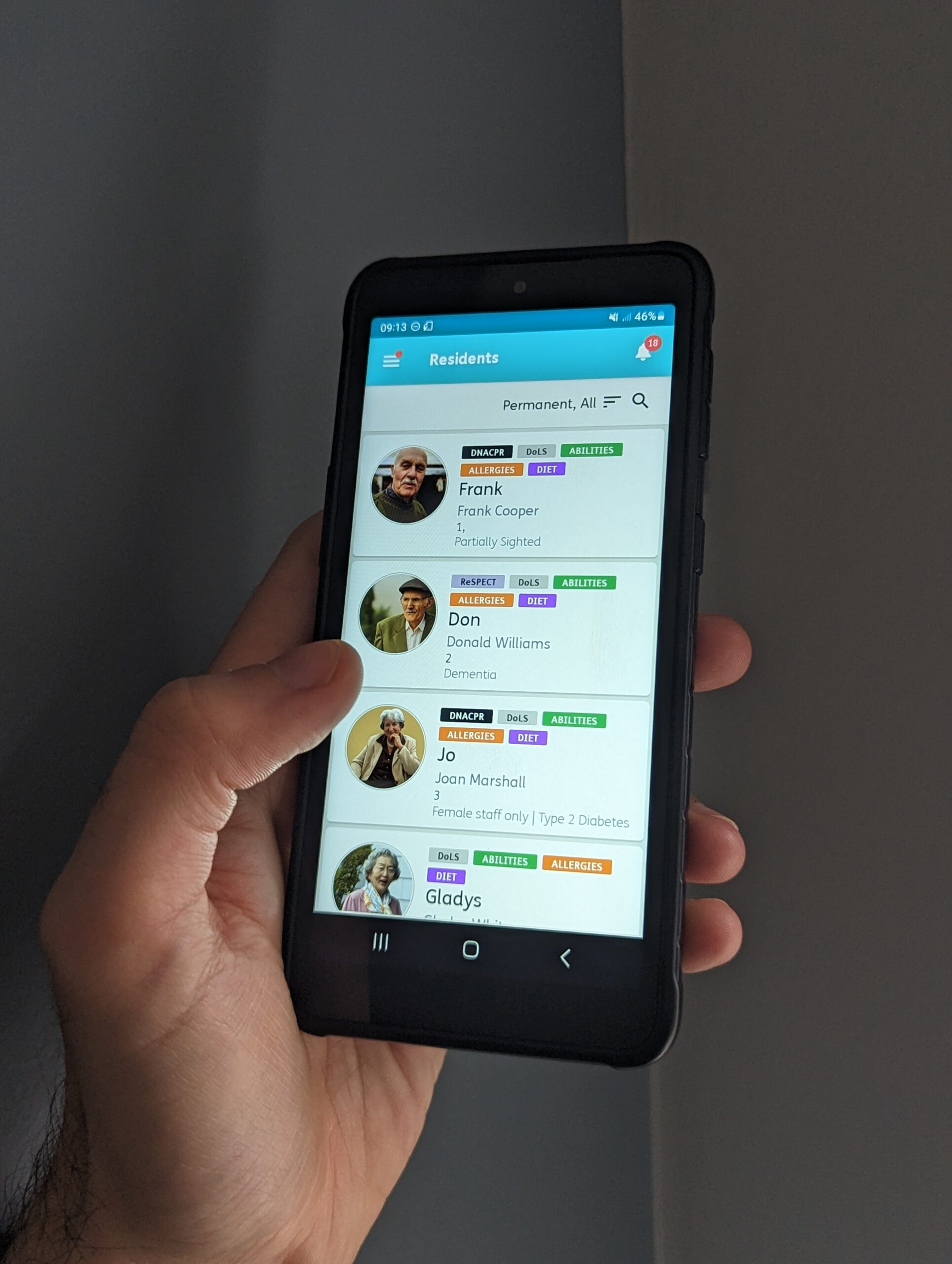Nourish Care Integrates with Whzan Digital Health

Providing vital observations alongside daily care records in Nourish and Whzan for a deeper understanding of care needs
Nourish Care continues to revolutionise digital care planning provision in the adult care sector by integrating data with Whzan Digital Health, a health monitoring system connected to the NHS and used in over 3,000 care homes that is already freeing up hospital beds leading to speedier recovery times and better health outcomes.
The collaboration between Nourish and Whzan means that vital observations will be available alongside daily care records giving care teams instant access to up-to-date clinical patient information.
Whzan Digital Health created the Whzan Blue Box, an all-in-one telehealth system providing wireless monitoring equipment to enable carers to measure vital signs and calculate a National Early Warning (NEWS2) score. This ensures that any signs of deterioration are detected at the earliest opportunity. Used widely by the NHS and carers throughout the UK, the Blue Box monitors patients across care homes, domiciliary care facilities and individual patient homes. It enables care teams to conduct multiple comprehensive clinical assessments, communicating results to healthcare professionals remotely.
Now Whzan and Nourish have linked up their solutions, vital observations such as blood oxygen levels, temperature, pulse, blood pressure and respiration rate will appear alongside daily care records giving care teams instant, reliable data to determine the best course of treatment and follow-up action. This means that Nourish will become a single source of reliable information for care teams, removing the need to access multiple systems and therefore saving time. The benefits will be felt across the sector from Integrated Care Boards through to independent care providers.
The integration gives clinicians, carers and patients more peace of mind. The Blue Box is adaptable to multiple conditions and has already been shown by NHS reports to save up to 50% demand on emergency services and hospital bed days. It has reduced ambulance call outs and enabled carers to make decisions that have a lasting impact on the health of individuals.
Steve Lawrence, Head of Product at Nourish had this to say…
“We are thrilled to be partnering with Whzan, their Blue Box solution provides an important service for care settings across the UK. The integration provides tangible benefits, surfacing vital signs directly into Nourish to enable informed decision-making and pro-active adjustments to treatment plans. Our Integration also reduces the administrative burden of manual data entry and the associated error risk. We look forward to seeing the positive benefits the integration brings to our customers and the people they support.”
John Cooling, Chairman of Whzan Digital Health commented…
“This integration will enable care homes to eliminate duplication of work. Clients detailed within Nourish will automatically populate Whzan caseloads and Whzan vital signs plus NEWS2 data will be automatically transferred into the Nourish record. All they need to do is contact Whzan and we will complete the link.”
Nourish Care is the leading provider of digital care management software in the UK. It was one of the first digital social care record suppliers to be recognised as an NHS Transformation Directorate Assured Supplier at launch and is accredited by PRSB as a Quality Partner. The easy-to-use mobile app provides care teams with person-centred tools, timelines, assessments and more to drive outstanding care and improve outcomes for those with support needs. Nourish works with more than 3,500 care services in the UK and overseas within residential homes, nursing homes, learning disability services, mental health services, and other care settings.
Whzan is the most widely adopted remote health monitoring system commissioned by the NHS in all sectors of care homes supporting daily care to over 100,000 patients from more than 40,000 carers. The multi-award winning system is used extensively for patients in the place they call home to feel reassured their health is supported and any unexpected changes are detected quickly leading to faster support and a speedier recovery.






